Different Kinds of Art Pattern Designs for a Lid
Articles and Features
The Art of Repetition: Top 10 Pattern Artists
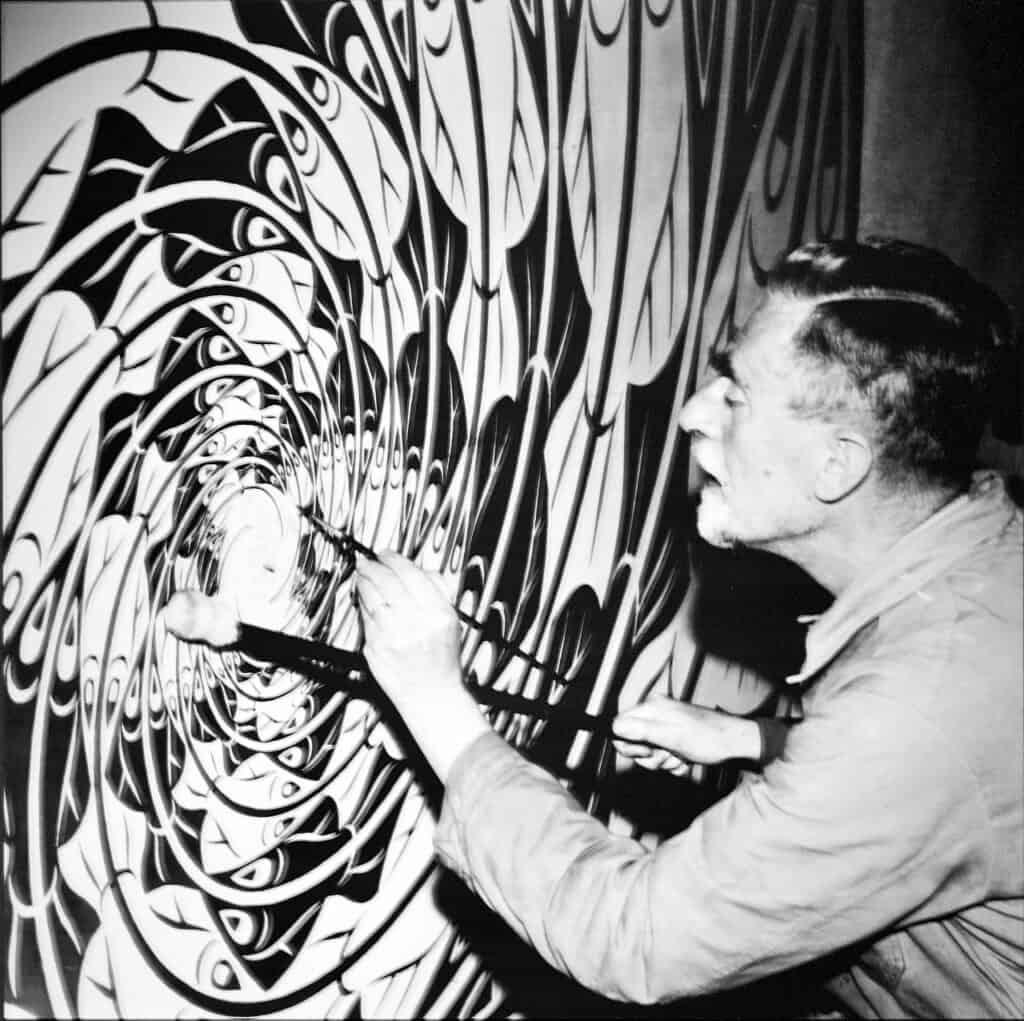
By Shira Wolfe
"I think you lot get meaning through repetition."
Damien Hirst
Repeated forms and regular arrangements have been used in fine art from aboriginal times. The elementary act of repeating the aforementioned unit over and over again creates new narratives and interpretations. From fine art inspired by ancient architectural patterns to the development of serialisation in Op and Pop Fine art, we highlight 10 pattern artists who used repetition in their art, each in their ain dissimilar way.
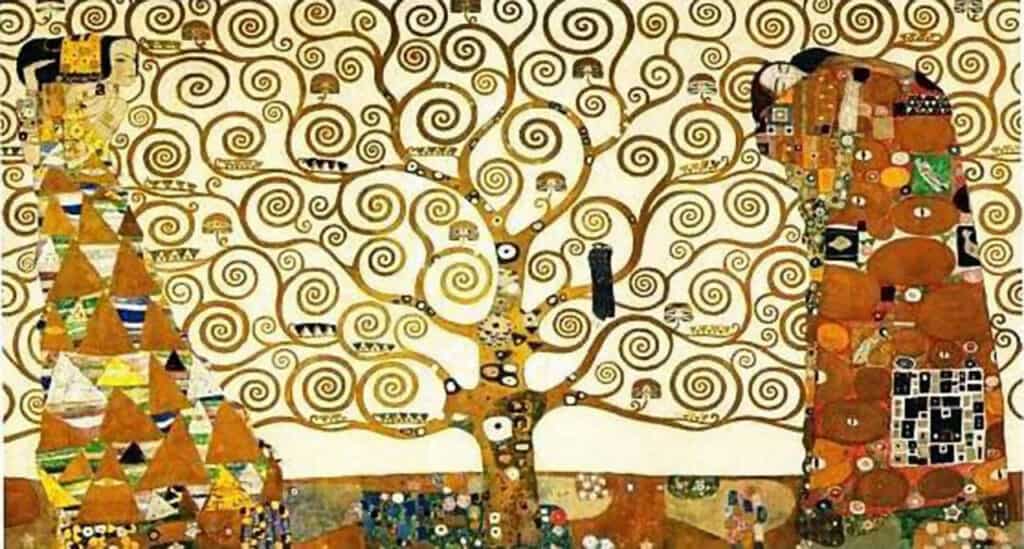
1. Gustav Klimt
Gustav Klimt, known for his ornate, decorative mode and the use of luxurious aureate leafing, oft used patterns in his artworks. The motifs were inspired by Byzantine, Greek and Egyptian art. In The Kiss (1907-eight) for case, flat areas of irregular patterns compose the entire painting. The man'south body is created using a repeating rectangle motif, and the woman's trunk is equanimous of circles. In cartoons for the execution of a frieze for the dining room of Stoclet Firm in Brussels (1910-xi), nosotros see a recurring swirling motif that makes up the Tree of Life. The figure on the left side of the tree wears a dress with triangular patterns, while the figure on the correct, in the midst of an embrace, has several different shapes on his robe: circles, squares and triangles. In fact, fifty-fifty the gold leafing Klimt used and then often in his paintings provides a dazzling patterning, clearly visible in his Portrait of Adele Bloch-Bauer I (1907).
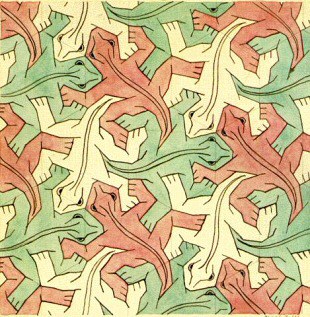
ii. G.C. Escher
Dutch creative person G.C. Escher came to his signature style following a trip to the Alhambra Palace in Granada, Spain. He carefully copied the geometrical tilings covering the facade of the palace and from that moment onward, his artistic product became much more formally inventive. He started to develop fine art following the principles of tessellation (covering a plane using i or more than geometric shapes, with no overlaps and gaps). At first, Escher explored working with the basic patterns, but and then he moved on to work with all sorts of creatures resembling fish, birds, lizards and insects, stemming from his love for the natural world. Escher bundled his shapes across a apartment aeroplane such that the spaces between his figures would create other recognisable shapes. In these images, the viewer tin cull to see one or the other prepare of shapes as the foreground at his or her volition.
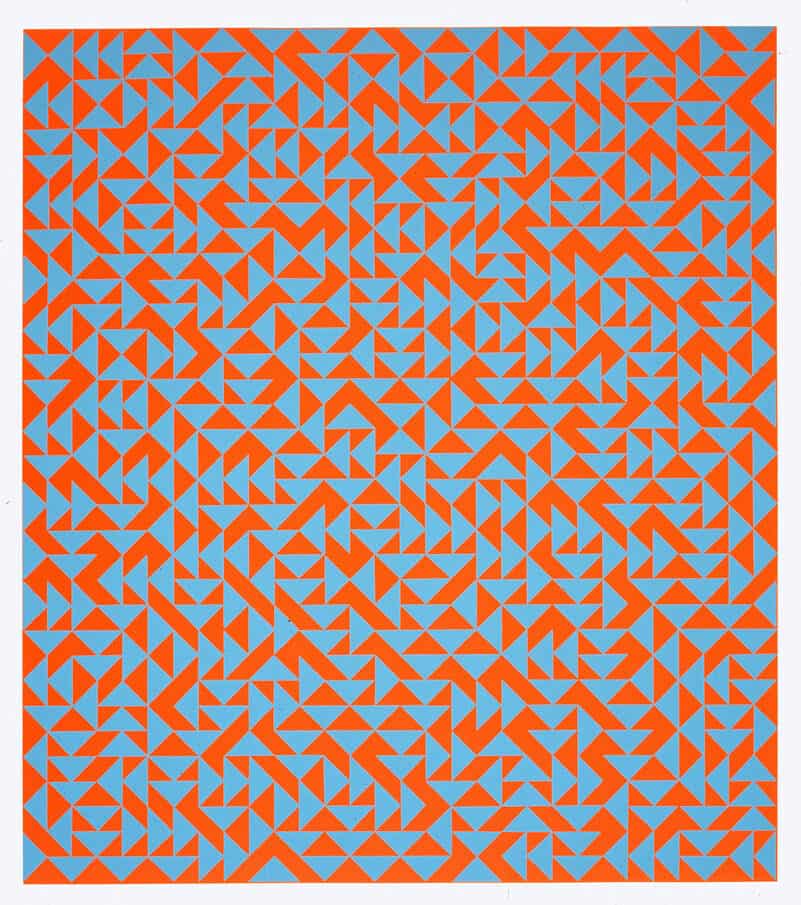
3. Anni Albers
Born in Berlin in 1899, Anni Albers received her education at the Bauhaus in Weimar, before moving to the United States where she started to create mass-producible fabric patterns. Albers worked with striking geometric patterns and bold colours, helping to pioneer the Modernist movement.
Albers'due south revolutionary "pictorial weavings" were influenced by Pre-Columbian art and textiles, which she studied during her trips to Mexico in the 1930s and 1940s. In both her textiles and her prints, she created intricately patterned, complex compositions built upon geometric motifs and repeated elements. Later 40 years of creating her iconic woven works, Albers started printmaking in 1963, merely when the Op and Popular Fine art movements were in prominence. In one of her serigraphs, Untitled (1969), we see a hard-edged geometric composition characteristic of her prints. Hundreds of identical turquoise bluish triangles are set up against a red background, and by rotating private triangles, Albers energised the composition and revealed diverse red shapes.
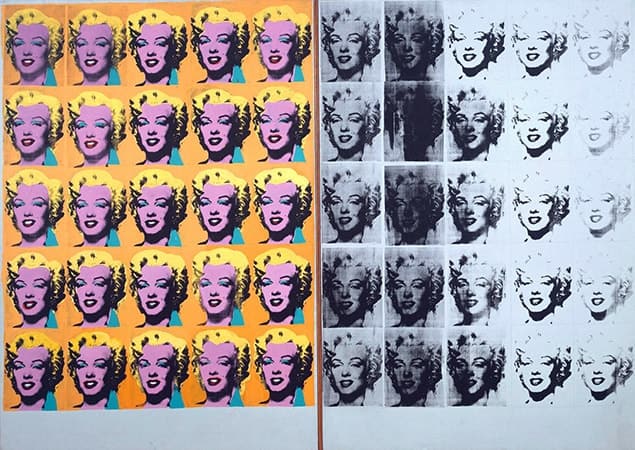
four. Andy Warhol
Legendary Popular Artist Andy Warhol is known for working with repetition in his silkscreen prints inspired by the imagery of popular civilization and mass production but too worked across a wide range of media besides printmaking, including painting, cartoon, sculpture, photography, music and picture show. He became famous for his repetitive images of soup cans, soda bottles, dollar bills, and portraits of celebrities including Marilyn Monroe, Mick Jagger, Elvis Presley and Elizabeth Taylor. He would often repeat the aforementioned motion-picture show in one piece, differentiating between them with various colours. In essence, Warhol was creating his own repetitive patterns, and these became some of the most iconic images of the 20th century.
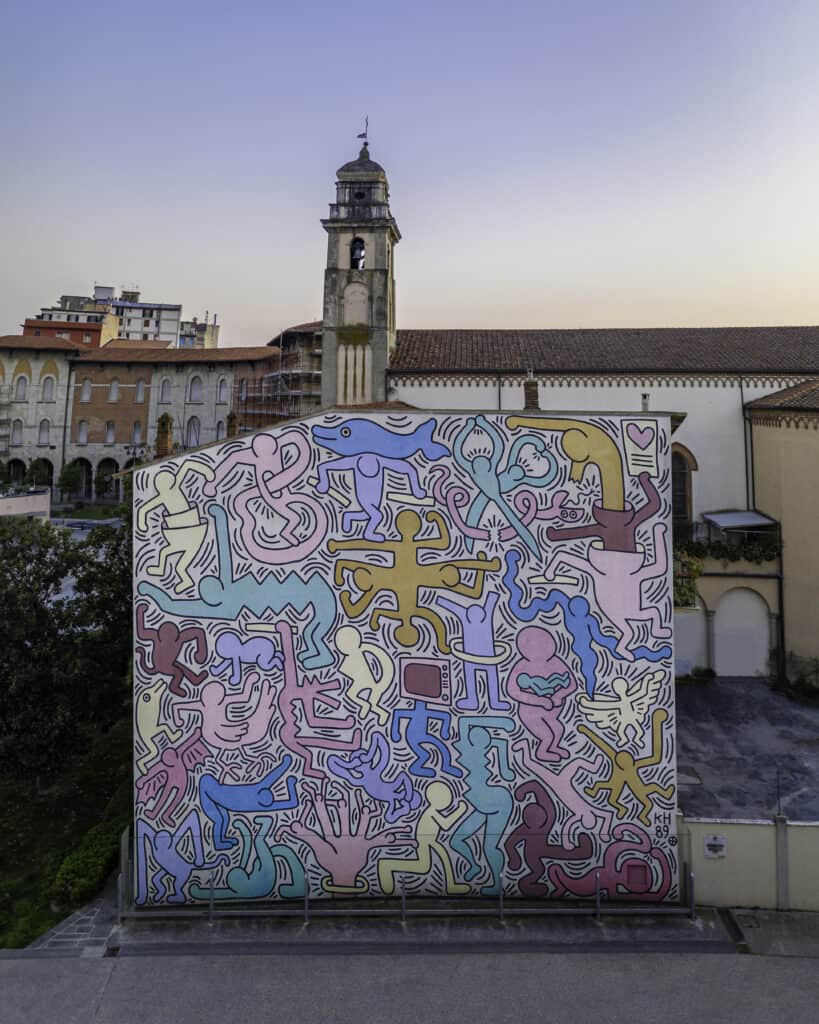
five. Keith Haring
1980s street art phenomenon Keith Haring became known for his graffiti tags of interlocking bodies that he would marker the blackness poster mounts in the New York City subways with. He soon created a recognisable set of images and symbols that he would repeat over and over again as enigmatic and colourful patterns, all across town in New York City too as in his paintings and prints. Famous Haring themes are his line-drawn radiant babies, barking dogs and human figures. With the increase of his public recognition, Haring started creating big-scale murals that addressed political and societal issues (like his Cleft is Wack mural from 1986), always using his personal iconography and the repetition of these symbols.
"I would cover a sheet with nets, and so continue painting them on the table, on the flooring, and finally on my ain body. […] the nets began to expand to infinity. I forgot about myself equally they enveloped me."
Yayoi Kusama
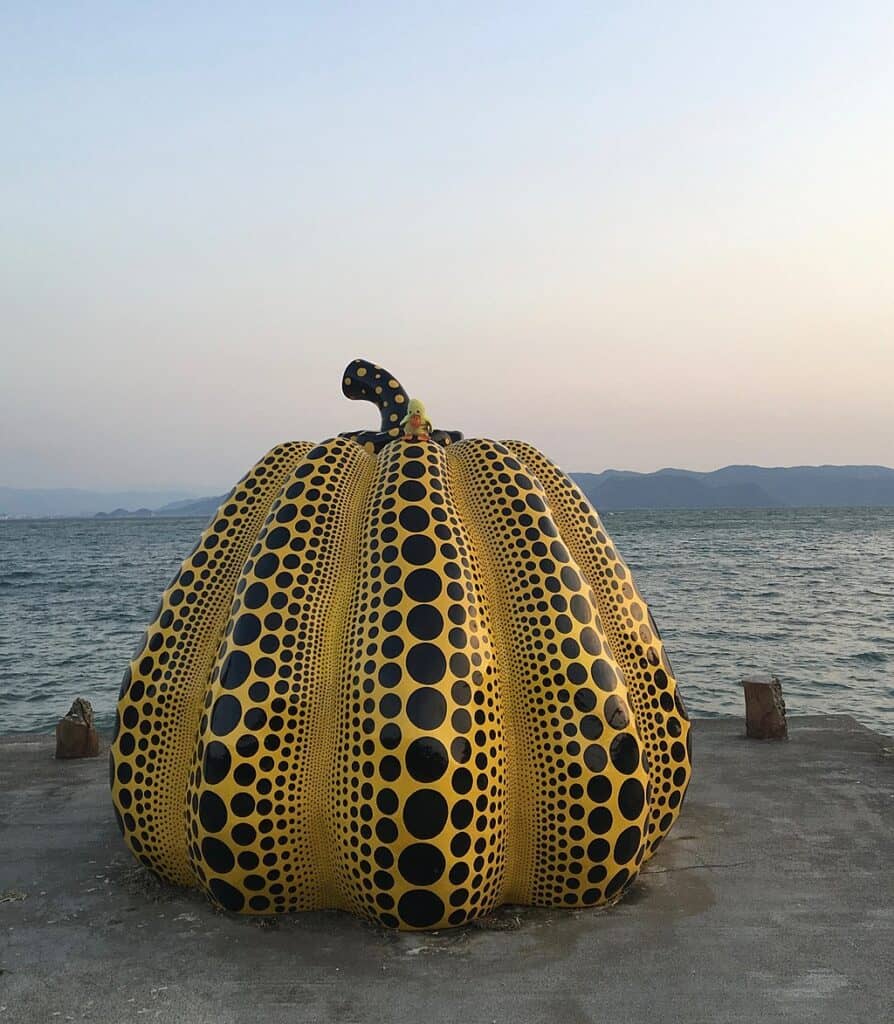
vi. Yayoi Kusama
Yayoi Kusama is one of the nearly famous blueprint artists alive today. She started developing her groundbreaking visual language in the 1950s with her Infinity Cyberspace paintings – made entirely from repetitive semi-circular brushstrokes creating lace-like patterns that cover the canvas and propose an expansion into infinity. In her words: "I would embrace a sheet with nets, so continue painting them on the table, on the floor, and finally on my own trunk. […] the nets began to aggrandize to infinity. I forgot nigh myself as they enveloped me." This idea of infinity through repetitive patterns has been fundamental for Kusama's farther artistic production. No matter the medium in which she creates, be information technology painting or sculpture, Kusama always continued to employ the same motif: endless dots. The dots first came to her at historic period 10, when she had hallucinations in which she saw light flashes, fields of dots and auras. Kusama successfully merges her own inner globe with the outside world as her impressive, whimsical sculptures filled with her dots can be found all over the world.

vii. Damien Hirst
Damien Hirst, the near famous of the Young British Artists (YBA), is another lover of patterns and repetition in his art. Aside from his notorious formaldehyde works and his diamond skull, Hirst is known for his use of patterns. Series such as his Kaleidoscope paintings (composed of thousands of butterfly wings placed in intricate patterns) and his Spot paintings (consisting of countless coloured spots) are Hirst's answer to the fine art of repetition. "I think yous go meaning through repetition," Hirst explains. Of the thirteen sub-series in Hirst's Spot painting category, his Pharmaceutical paintings are his well-nigh prolific, with over thou of them in existence. Hirst works with administration to produce these works, removing any physical show of human being intervention and then that the works appear to take been constructed mechanically.
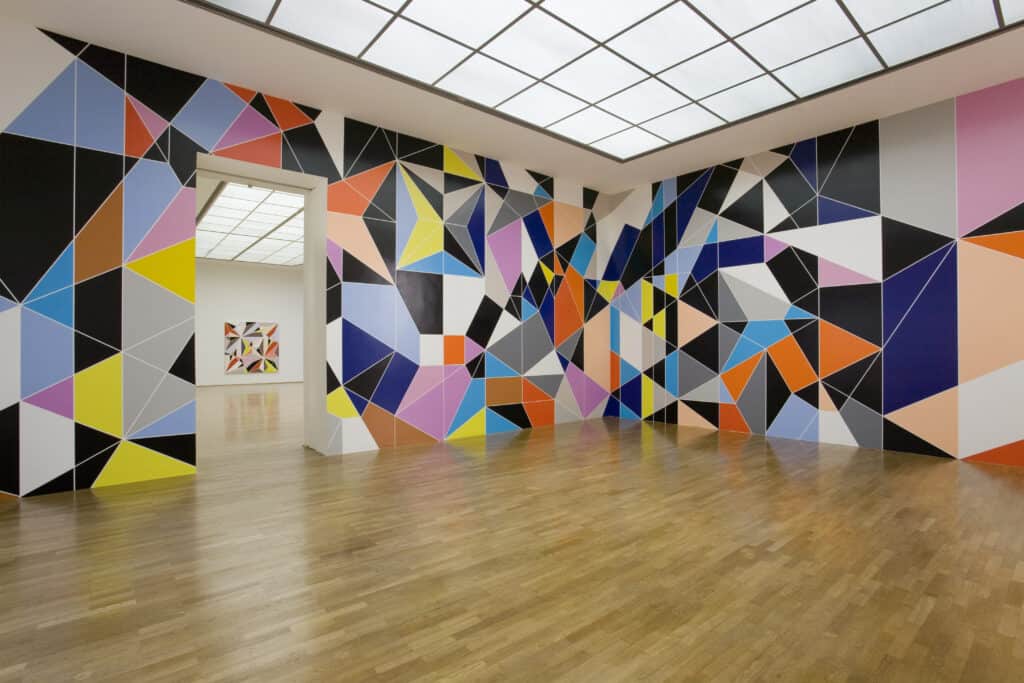
viii. Sarah Morris
New York-based British creative person Sarah Morris uses the strategies of architecture (namely lark and scale) to create her fascinating abstract paintings and films investigating "urban, social and bureaucratic typologies". Her works are based on different cities and stem from a shut inspection of architectural details combined with Morris'southward sensitivity to the psychology of a city and its inhabitants. Her city-inspired paintings are created using household gloss paint on square canvases, and she employs rigorous, repetitive and often kaleidoscopic grid-forms referencing architectural motifs, signs or urban vistas. Through the vivid colours she uses, each city's unique essence and dynamic is evoked.
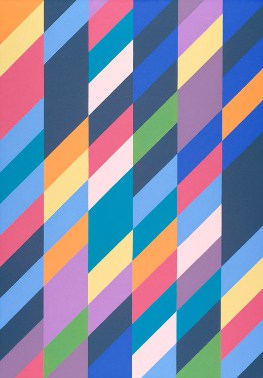
9. Bridget Riley
British artist and designer Bridget Riley is one of the almost historic Op artists, using colours, shapes and patterns in such a fashion that an optical illusion is created. She became inspired to explore optical effects when studying Seurat'due south pointillism, some of whose works she besides copied in immaculate detail. Riley's works combine clean lines, colour arrangements, geometric precision and repetitive patterns to create optically compelling visual furnishings. Of her work, she once said: "The eye can travel over the surface in a mode parallel to the way information technology moves over nature. Information technology should experience caressed and soothed, feel frictions and ruptures, glide and migrate. One moment, at that place volition be nothing to look at and the next second the canvas seems to refill, to be crowded with visual events."

10. Takashi Murakami
We conclude our listing with Japanese creative person Takashi Murakami, the proponent of the innovative "Superflat" aesthetic, which combines classical Japanese fine art with contemporary Japanese pop civilisation. Murakami works consistently with the repetition of the same or similar patterns and symbols, all exploring the links between traditional printmaking techniques and Japanese anime and manga. His visual iconography consists of images of processed-coloured drawing-similar characters – grin flowers, colourful mushrooms and creatures with bulging optics popping out at the viewer to cause an overflow of colours and cuteness. His art challenges the boundaries between what is considered "high art" and "low art", bringing the aesthetic of advertisements and cartoons into the high-end gallery and museum earth. Murakami'south art of repetition extends perchance the most of all the artists on this list to the earth of consumerism through mass-produced items that he sells through his ain visitor Kaikai Kiki Co. Ltd. In this sense, the repetition of Murakami'southward patterns is endless.
Relevantsources to learn more
Explore Yayoi Kusama'due south entire body of work in the current retrospective art Martin Gropius Bau in Berlin
You may too similar:
Height ten Artworks To Go You in the Mood For Summer
Superlative ten Virtually Iconic Art and Fashion Collaborations
Top 10: The Earth's Most Remote Art Installations
Elevation 10 Pioneers of the shaped canvas
florancehoughts1992.blogspot.com
Source: https://magazine.artland.com/the-art-of-repetition-top-10-pattern-artists/

0 Response to "Different Kinds of Art Pattern Designs for a Lid"
Post a Comment